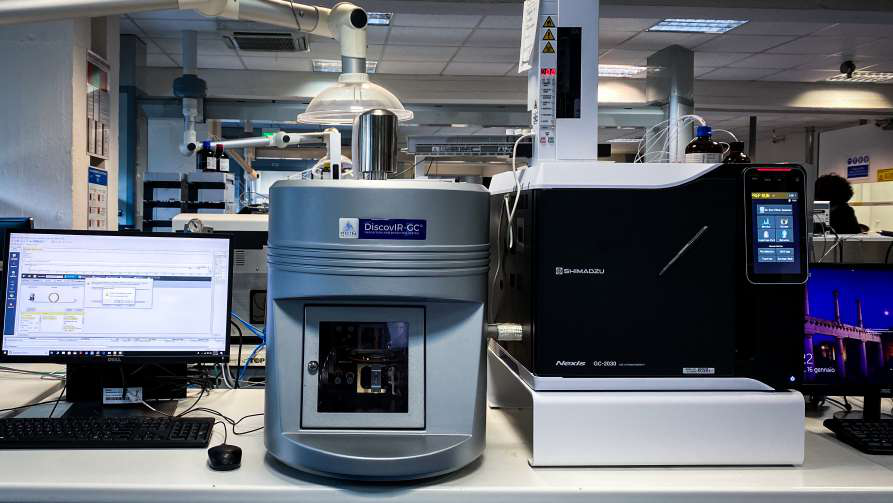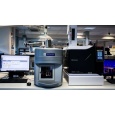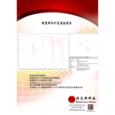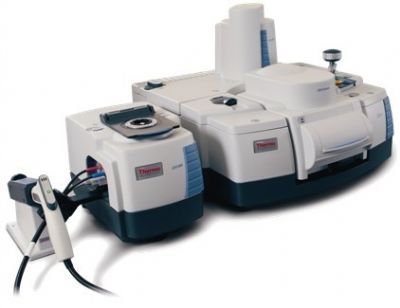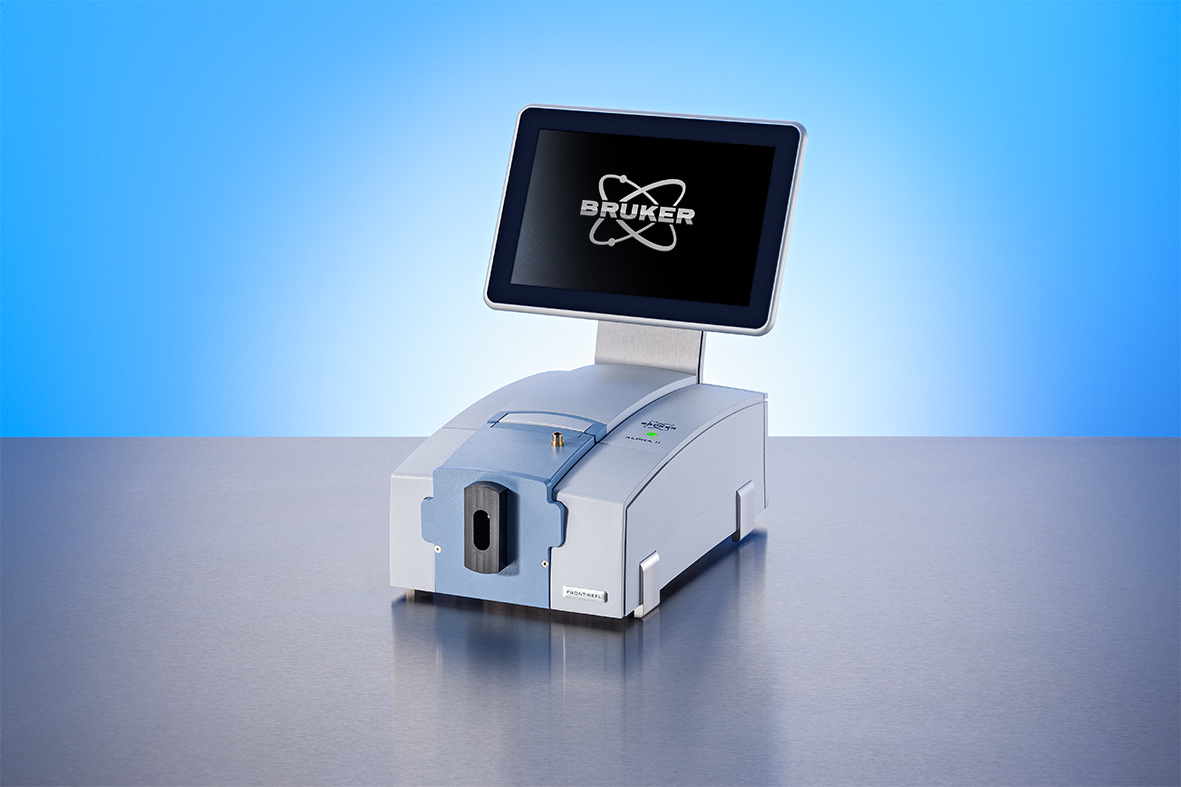微塑料在环境中无处不见,近期受到大量的关注。 大量的研究工作者采用红外/拉曼光谱仪进行微塑料的鉴定,但在后期的数据分析上由于标准样品的获取而受到数据分析制约。
本方案采用萨特勒标准数据库结合KnowItAll专利ODHM技术对微塑料进行结果鉴定及分类识别。可以获得满意的分析鉴定及归类结果。
方案详情

WILEYENABLING DISCOVERY POWERING EDUCATION SHAPING WORKFORCES Table of Contents knowtAl Microplastic Classification Michelle D'Souza, Ph. D.Graeme WhitlevNatalie ClinesKeith KunitskyGabrielle Bethancourt-HughesZille Huma Wiley Science Solutions Introduction. 3 Method.. .4 IRR. Raman. Results and Discussion... .5 IR microplastic classification and class separation... US EPA Dataset.. U. of Southampton.. Open Specy (IR/ATR-IR-636 spectra).. Examples of using Spectroscopy Edition for unknown microplastic classification and identification......7 Conclusion. .11 References... .12 Microplastics are everywhere1-3. Studies have found that they have profound impacts on lives acrossspecies. Environmental sample classification/identification has received a lot of attention lately. Onepopular method is to apply IR/Raman spectroscopytechnologies24,5. These technologies have provenrecords of effectiveness in analyzing polymers, which are parents of microplastics. However, it is not easyto collect samples to make reliable reference spectral databases for unknown comparison. Spectrumanalysis organizations are under pressure to provide a quick, easy and low-cost tool to meet this challenge. Visual comparison of typical microplastic IR spectra4,5 to those of parent polymers available in KnowltAll IRSpectral Library6.7 lead us to believe that microplastic IR spectra exhibit similar characteristics. Therefore,"classification spectra" have been derived by using patented Overlap Density Heat Map (ODHM) technology.Our study suggests that these classification spectra can be used for unknown microplastic classification.Combined with the massive KnowltAll IR databases offered by Wiley,one can identify microplastics. Research has also shown that Raman spectrum of microplastics can be compared to that of the parentpolymers2. We suggest using the KnowltAll Raman Spectral Library67, the largest collection, for microplasticidentification. IR The IR Microplastic Classifications spectral database was created using patented ODHM technology.Currently, it has these classes and is extendable: ·Polyethylene (IR and ATR-IR) ·Polyacrylate(IR) · Polyamide (IR and ATR-IR) · Polycarbonate (IR and ATR-IR) ·Polypropylene (IR and ATR-IR) ·Polystyrene (IR and ATR-IR) ·Polyvinylchloride (IR and ATR-IR) ·Chlorinated Polyvinylchloride (IR) ·Polyester (IR) Microplastic testing datasets (IR and Raman) have been obtained from open sources, such as the USEPA8, the University of Southampton°and OpenSpecy10, to evaluate the IR Microplastics Classificationsdatabase. Class separations and classifications have been studied. The effect of classification spectraused in combination with real plastic database spectra has also been researched. Raman We examined various classes of plastic Raman spectra and concluded that it is difficult to buildclassification spectra for each plastic class. Since the Wiley Raman spectrum collection is relatively smalland inexpensive, one can identify microplastics8 using the existing Raman data collection. IR microplastic classification and class separation A correlation algorithm was used to compare spectra of microplastics from the three test datasetsagainst the IR Microplastic Classifications database. Carbon dioxide and water vapor peaks existingin sample spectra were excluded from the spectral comparison. Matches were judged by goodpeak alignment as well as Hit Quality Index(HQI) values. Below are the results of those studies. US EPA Dataset IR: 89 spectra and 11 types Raman: 60 records There are replicated IR samples per microplastic class; we chose one example to report. We observedgood HQI values and peak alignments among hits (Table 1). We also observed good separations andpoor peak alignments in the second hit class.(https://catalog.data.gov/dataset/isotope-ratio-mass-spectrometry-irms-and-spectroscopic-techniques-for-microplastic-charact) Table 1-EPA dataset to test microplastic classification spectra MicroplasticSample 1st Hit Peak Alignment 1st Hit HQI 1st Hit Classification HQI of Next Class Brown lid Excellent 86.99% Polyethylene 51.41% Polycarbonate_ballyhoo Excellent 53.09% Polycarbonate 49.97% Nylon6.0 Excellent 67.91% Polyamide 45.24% Black spice jar lid Excellent 83.90% Polypropylene 62.03% EPS Excellent 93.37% Polystyrene 35.40% Polyester scarf Excellent 67.33% Polyester 51.84% Pvc AWBERC.O Excellent 74.01% Polyvinyl chloride 33.85% U. of Southampton IR- 2,675 spectra None of the sample spectra were labeled for a particular class. For replicate samplings, we chose one ofthe replicate spectra for testing. The results are listed in Table 2. Table 2-Southampton samples to test microplastic classification spectra 1st Hit Peak Alignment 1st Hit HQI 1st Hit Classification HQI of Next Class Microplastic Sample SHWIRMP #867.Administrator 16 Excellent 91.16% Polyethylene 61.00% SHWIRMP #1498, Administrator 477 Excellent 77.99% Polyamide 50.64% SHWIRMP #2419, Administrator 151 Excellent 89.02% Polypropylene 66.83% SHWIRMP #2043, Administrator 720 Excellent 84.59% Polystyrene 46.05% SHWIRMP #1558,Administrator 537 Excellent 83.53% Polyester 61.63% Open Specy IR/ATR-IR-636 spectra Most of the spectra in this database are ATR-IR. Many sample spectra resemble each other. For thesecases, we selected one spectrum per for test purposes. As displayed in Table 3, the spectra wereclassified effectively. Table 3-OpenSpecy samples to test microplastic classification spectra Microplastic Sample 1st Hit Peak Alignment 1st Hit HQI 1st Hit Classification HQI of Next Class Polyethylene wax #285 Excellent 90.00% Polyethylene 50.97% PET#292 Excellent 79.73% Polyester 61.25% Polycarbonate #406 Excellent 77.29% Polycarbonate 44.54% Polystyrene expanded#333 Excellent 92.33% Polystyrene 36.41% Polypropylene #411 Excellent 92.71% Polypropylene 61.97% Polyvinylchloride #466 Excellent 80.03% Polyvinylchloride 36.06% Examples of using the Spectroscopy Editionfor unknown microplastic classificationand identification: Due to the urgent need for microplastic analysis, we are including the microplastic classification spectraldatabase with the KnowltAll Spectroscopy Edition so users can make immediate impact in this importantarea of research critical to our environment. Figure 1. IR-EPS.O_Microplastic Figure 2. IR-Clear Blue Water Bottle_Microplastic In this case, the sample spectrum best matches that of a commercial polymer product. However,one cannot easily identify the polymer. The classification spectrum match is the 6th hit, classifyingthe unknown parent as polyester. Figure 3a. IR-Brown Lid_Microplastic Figure 3b. IR-Detail of 3a-Brown Lid_Microplastic Again, identification of an unknown to a commercial name means very little. The microplastic spectrumclassifies this example's parent compound as polyethylene. Figure 4. Raman-HDPE Bead_Microplastic Raman microplastic samples can be identified by the Wiley Raman spectral database matchingeconomically and accurately. Figure 5a. Raman - PS Clear_Microplastic Figure 5b. Raman-bad baseline The original microplastic sample has a bad baseline (Figure 5b), but this is not a problem for KnowltAlI'sOptimized Correction (Figure 5a). We found that IR/ATR-IR microplastic classification, using classification spectra, is an effective methodfor classifying unknown microplastic IR samples. Search results provide enough separation in HQIvalues among classes for the practitioner to have confidence in the classification. The "IR microplasticclassification database" returns results instantly. The microplastic classification database is available in the 2021 maintenance release for the KnowltAllSpectroscopy Edition, and is available as a new feature to all current subscribers. This ensures thatall users can address microplastic contamination in an efficient and effective manner. Practitionerswho need to perform more comprehensive microplastic identifications should consider adding asubscription to the more inclusive IR and Raman collections. 1. National Oceanic and Atmospheric Administration. What are microplastics? https://oceanservice.noaa.gov/facts/microplastics.html (accessed 9 September 2021). 2. Sh.R.Pozdnyakov, E.V. Ivanova, A.V. Guzeva, E.P. Shalunova,K.D. Martinson, D.A. Tikhonova.(2020).Studying the concentration of microplastic particles in water, bottom sediments and subsoils inthe coastal area of the Neva Bay, the Gulf of Finland. Water Resources 47(4): 599-607.https://doi.org/10.1134/S0097807820040132 3. S.Selvam, A. Manisha, S. Venkatramanan, S.Y. Chung, C.R. Paramasivam, C. Singaraja.(2020).Microplastic presence in commercial marine sea salts: A baseline study along Tuticorin Coastalsalt pan stations, Gulf of Mannar, South India. Marine Pollution Bulletin 150: 110675. https://doi.org/10.1016/j.marpolbul.2019.110675 4. M.G.J. Loder and G. Gerdts (2015). Methodology Used for the Detection and Identification ofMicroplastics-A Critical Appraisal. In: Bergmann M., Gutow L., Klages M. (eds) Marine AnthropogenicLitter. Springer, Cham.https://doi.org/10.1007/978-3-319-16510-3_8 5. S. Tagg,J.P. Harrison,Y.ju-Nam, M. Sapp, E.L.Bradley, C.J. Sinclair,JJ. Ojeda. (2017). Fenton's reagentfor the rapid and efficient isolation of microplastics from wastewater. Chem. Commun. 53: 372-375.https://doi.org/10.1039/C6CC08798A 6. KnowltAll Software (version 2021). John Wiley & Sons, Inc. Hoboken, NJ(2021). [Computer Software] 7. KnowltAll IR & Raman Spectral Libraries. john Wiley & Sons, Inc. Hoboken, NJ (2021).[Computer Software] 8. Isotope ratio mass spectrometry (IRMS) and spectroscopic techniques for microplasticcharacterization. (2021) U.S. EPA Office of Research and Development (ORD). https://catalog.data.gov/dataset/isotope-ratio-mass-spectrometry-irms-and-spectroscopic-techniques-for-microplastic-charact[Dataset] 9. Stead,jessica, Laura (2021) Data: FTIR spectra for particles in subsampled water samples fromSouthampton Water and analysed for microplastic content. University of Southampton doi:10.5258/SOTON/D1892[Dataset] 10. Cowger W, Steinmetz Z, Gray A, Munno K, Lynchj, Hapich H, Primpke S, De Frond H, RochmanC, Herodotou O (2021)."Microplastic Spectral Classification Needs an Open Source Community:Open Specy to the Rescue!" Analytical Chemistry, 93(21), 7543-7548. https://doi.org/10.1021/acs.analchem.1c00123[Dataset] www.sciencesolutions.wiley.com WILEY Sep WILEYKnowltAll Microplastic Classification 微塑料在环境中无处不见,近期受到大量的关注。 大量的研究工作者采用红外/拉曼光谱仪进行微塑料的鉴定,但在后期的数据分析上由于标准样品的获取而受到数据分析制约。 本方案采用萨特勒标准数据库结合KnowItAll专利ODHM技术对微塑料进行结果鉴定及分类识别。可以获得满意的分析鉴定及归类结果。
确定
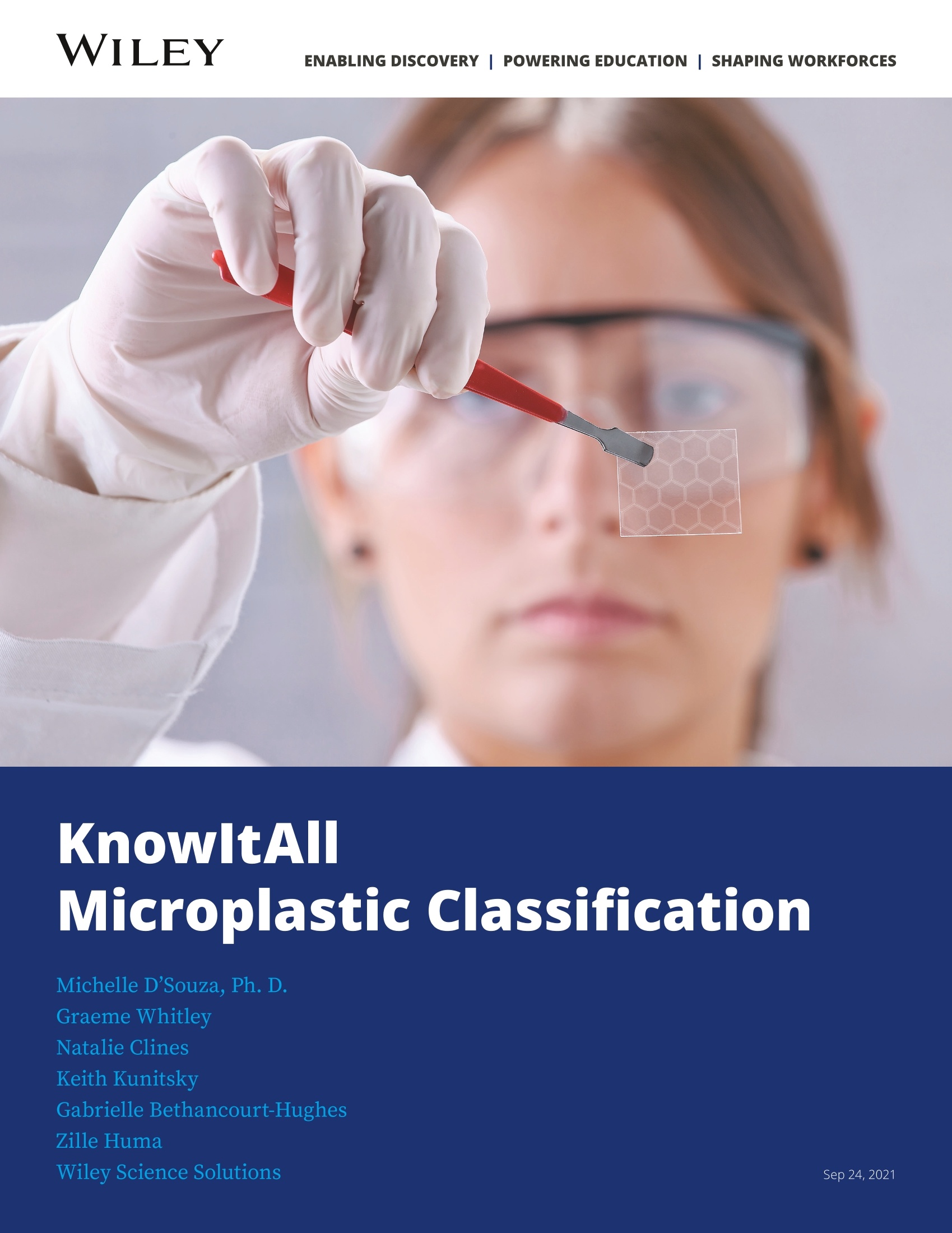
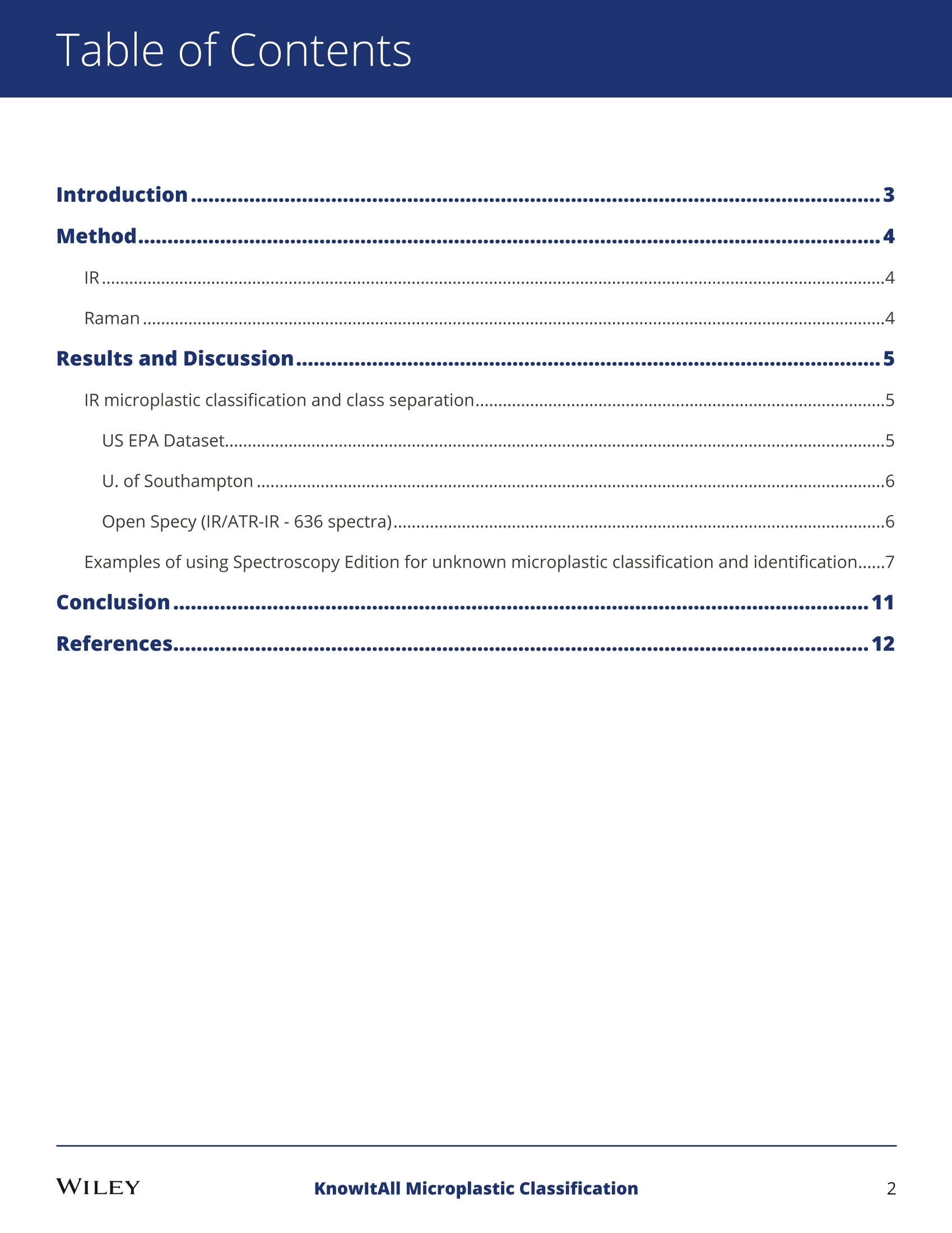
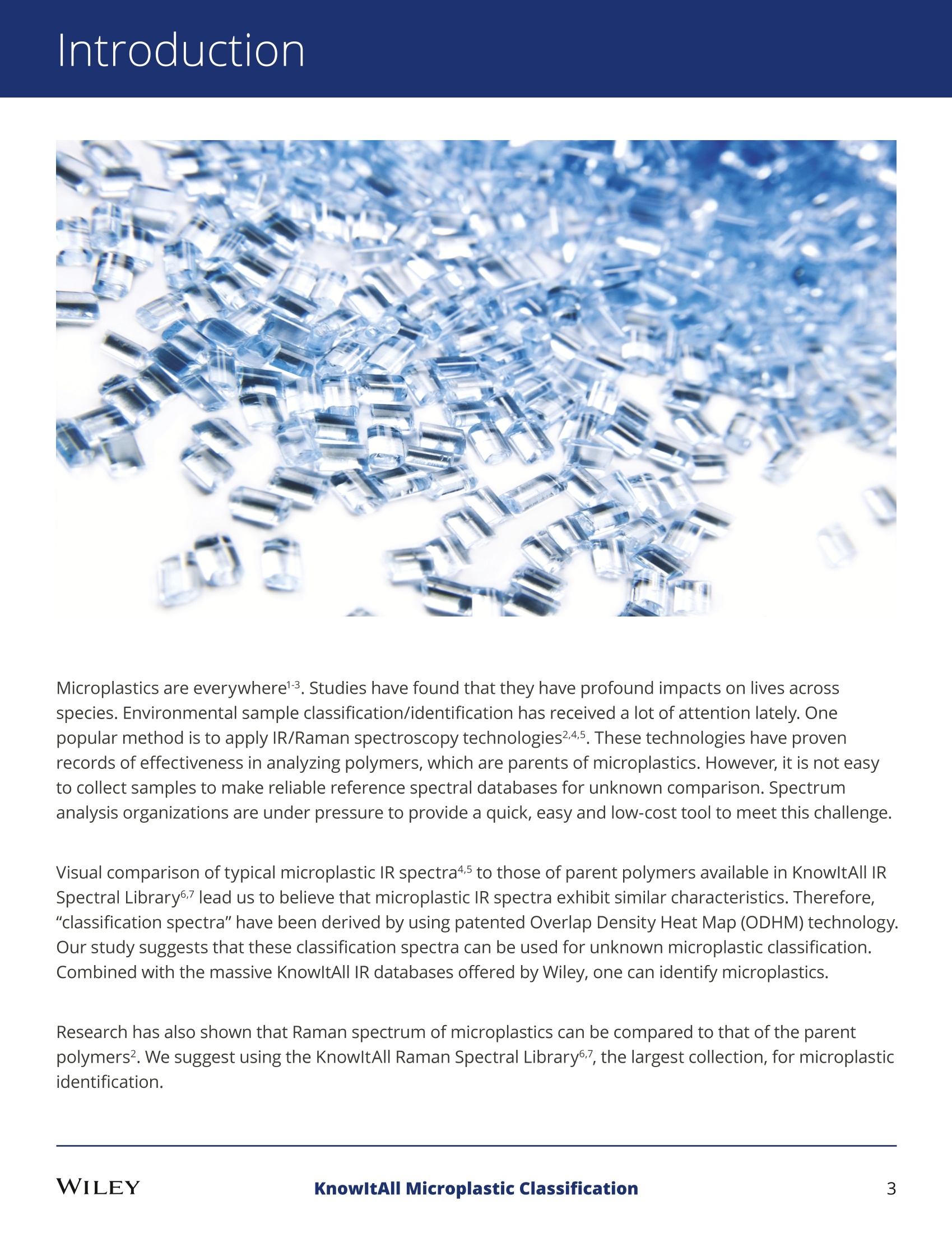
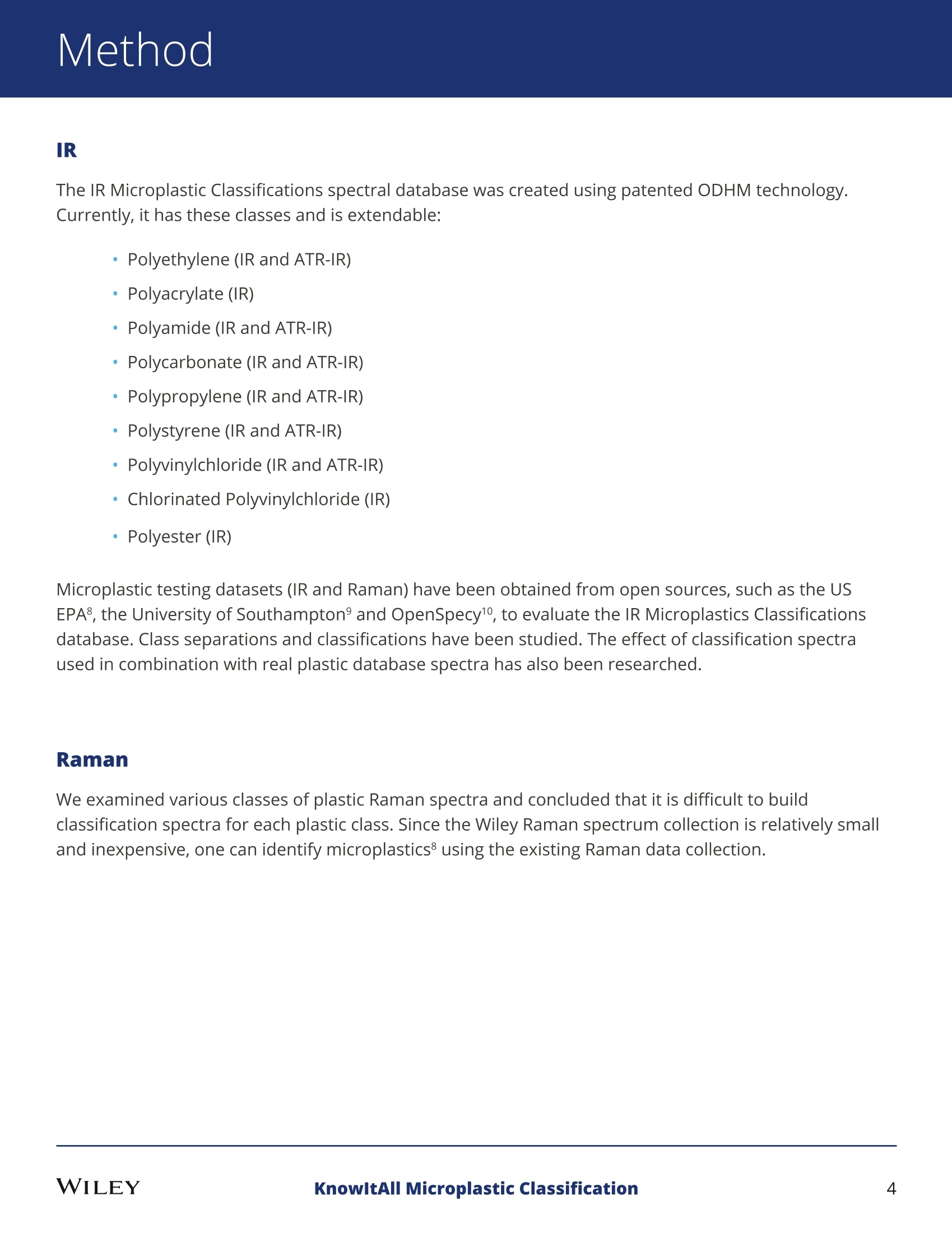

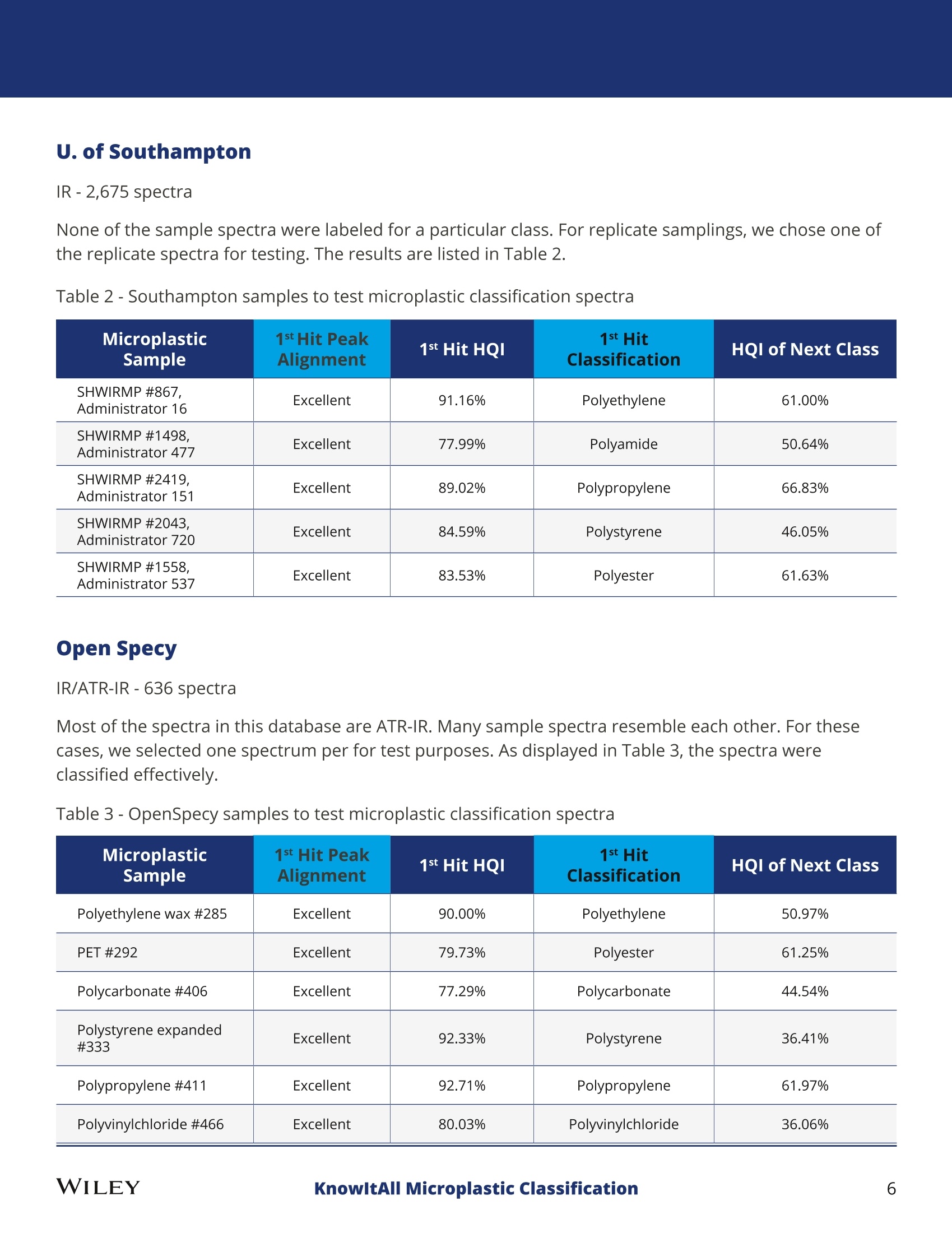
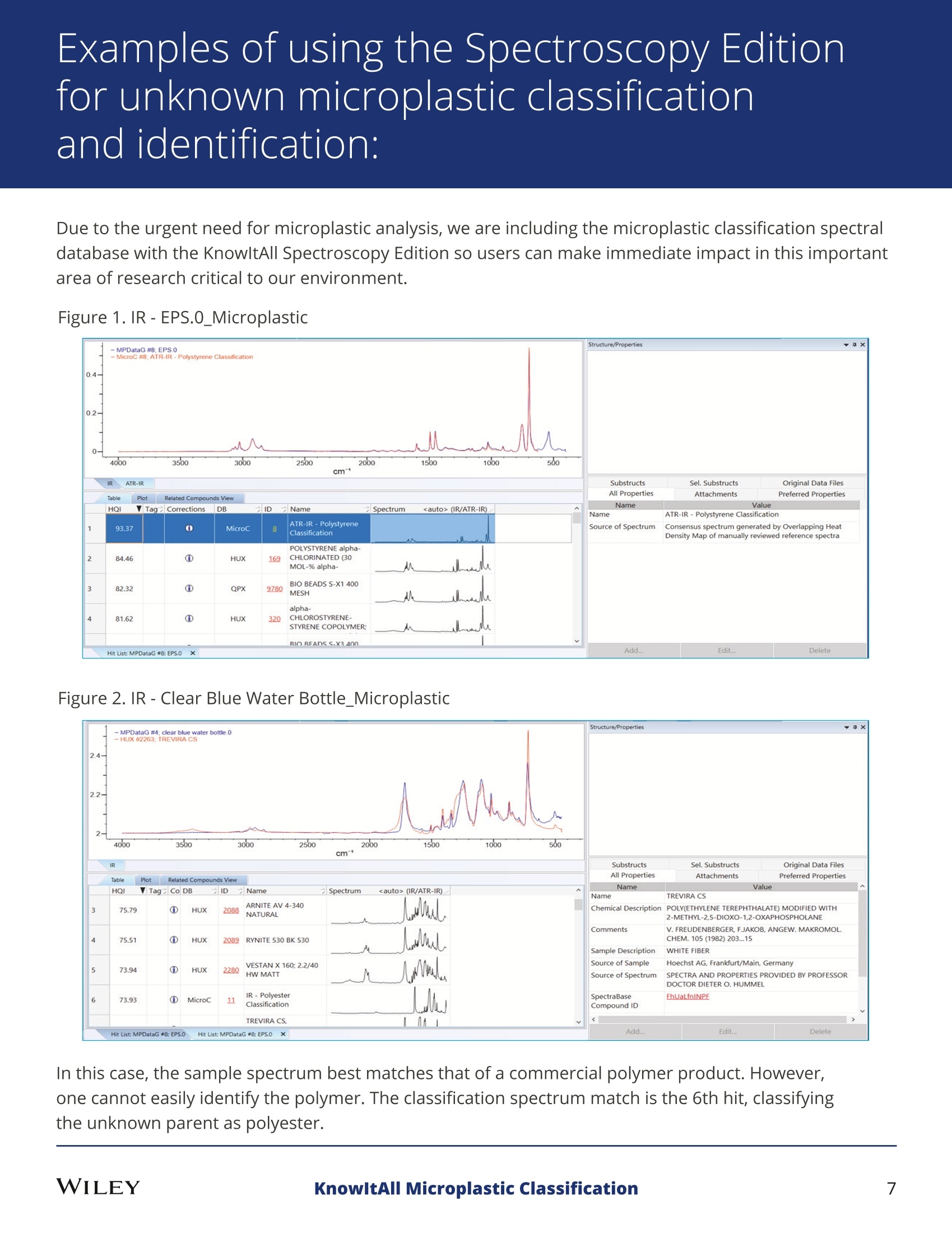
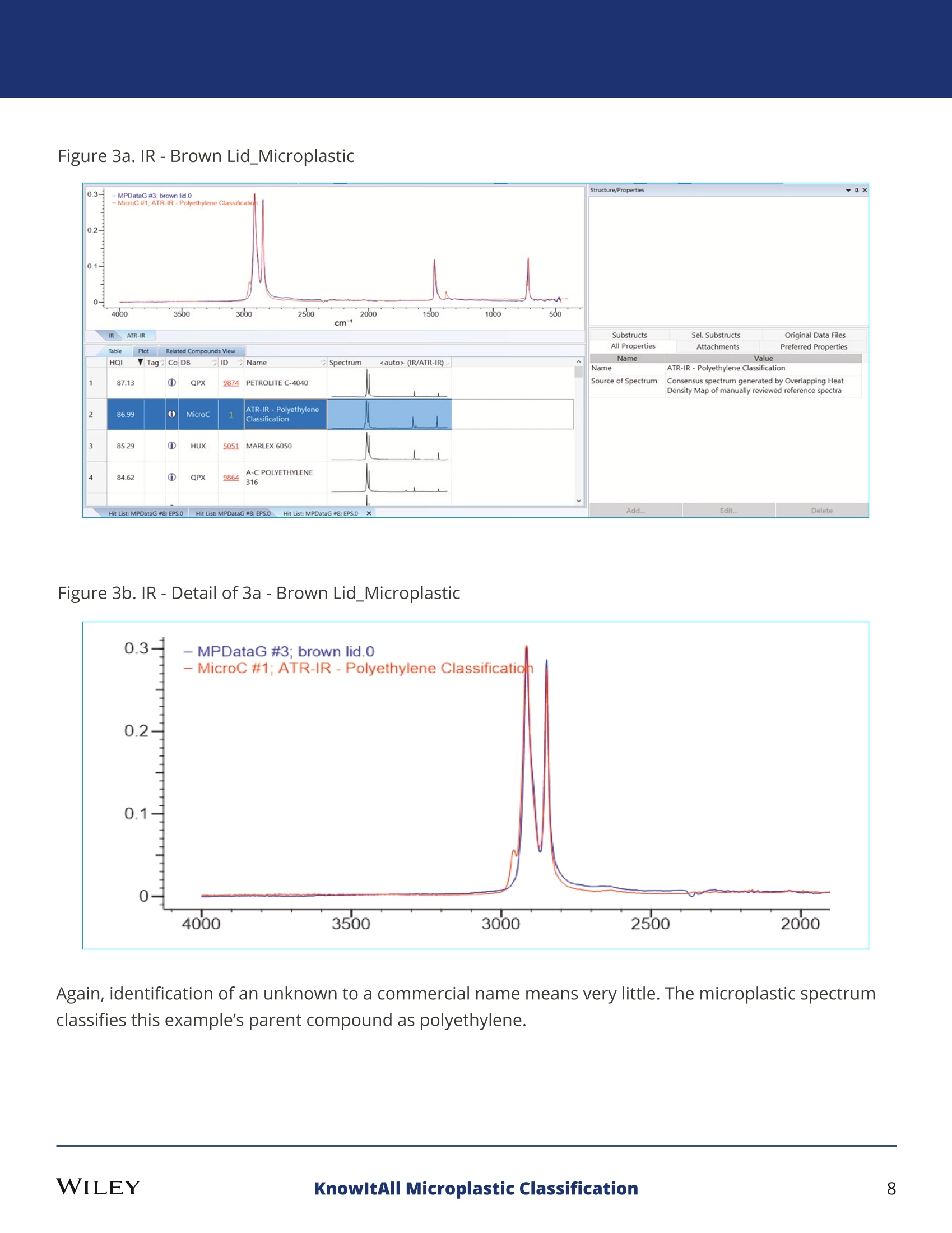
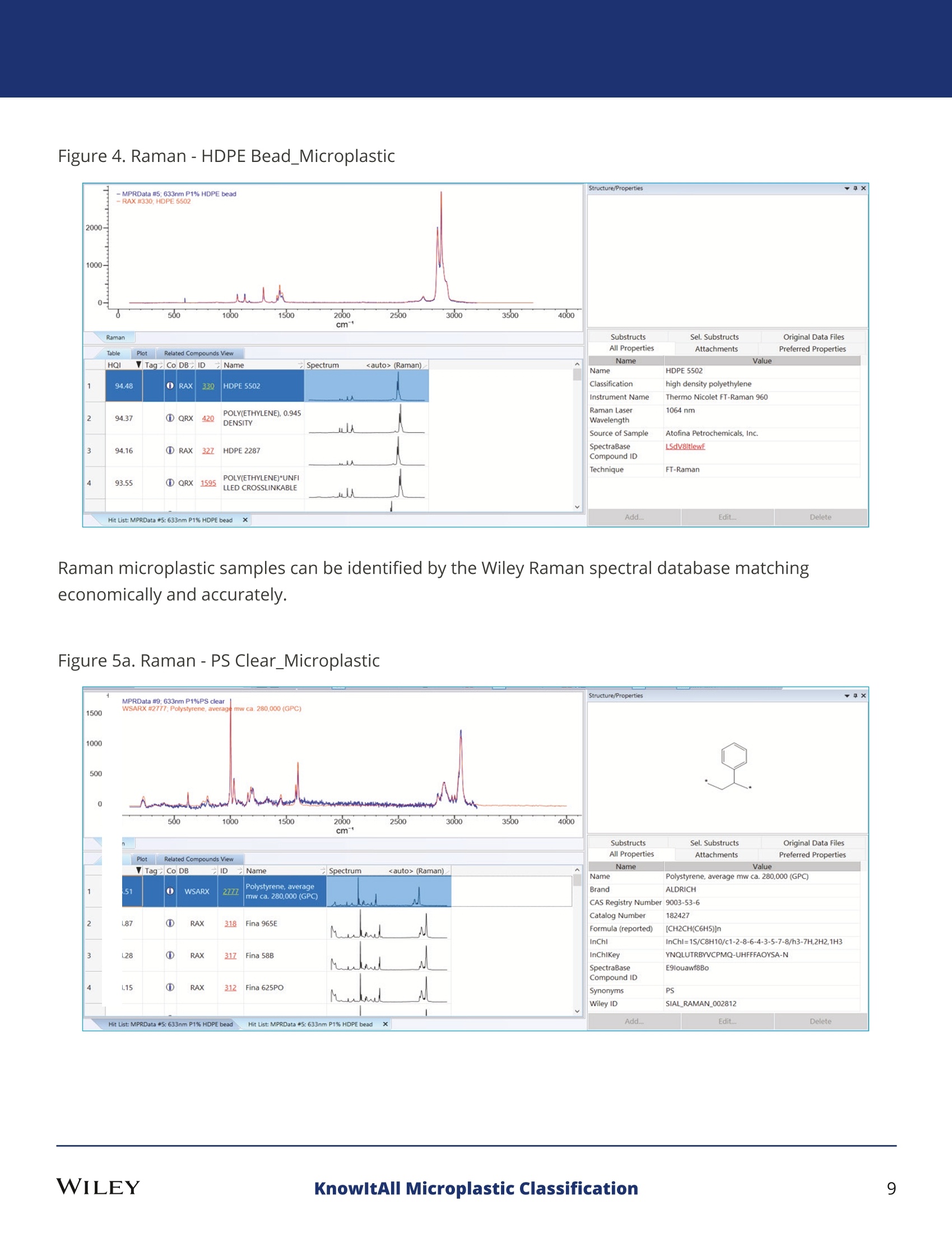

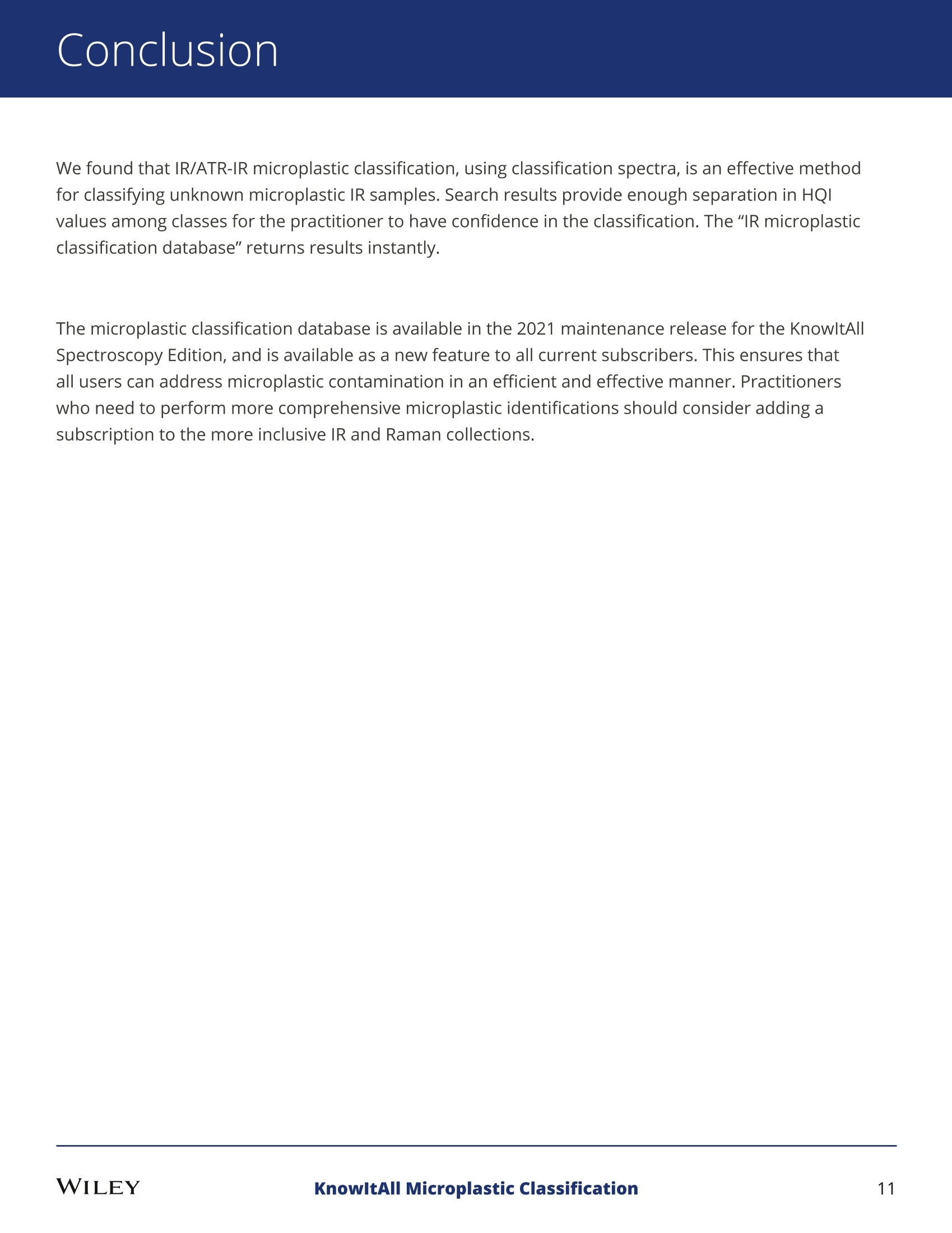
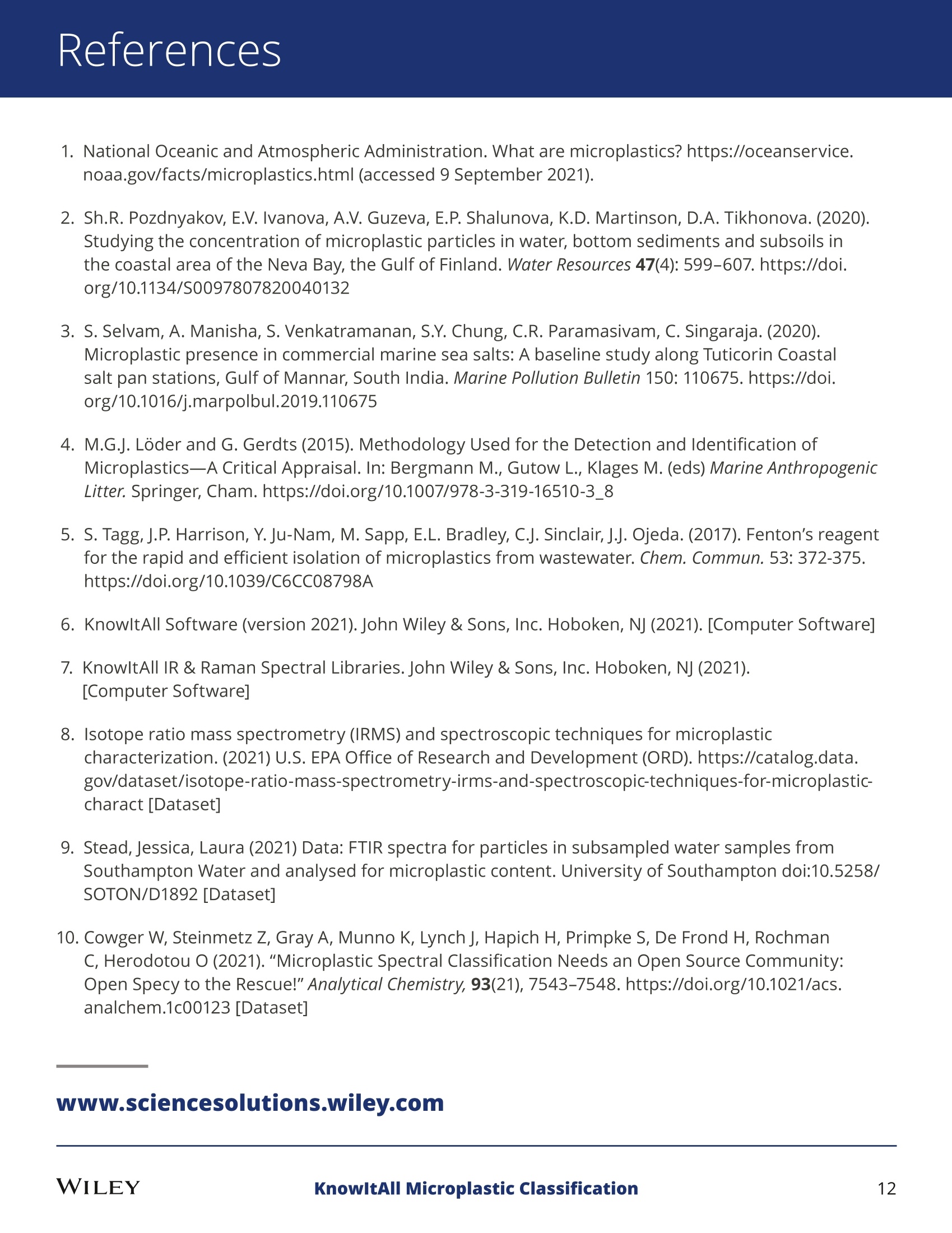
还剩10页未读,是否继续阅读?
北京派艾斯科技有限公司为您提供《环境,水中微塑料检测方案(红外光谱仪)》,该方案主要用于环境水(除海水)中有机污染物检测,参考标准--,《环境,水中微塑料检测方案(红外光谱仪)》用到的仪器有DiscovIR-GC气相色谱-微沉积固态红外联用仪、微塑料红外光谱数据库、KnowItAll 萨特勒红外光谱数据库、KnowItAll拉曼光谱数据库
推荐专场
相关方案
更多

